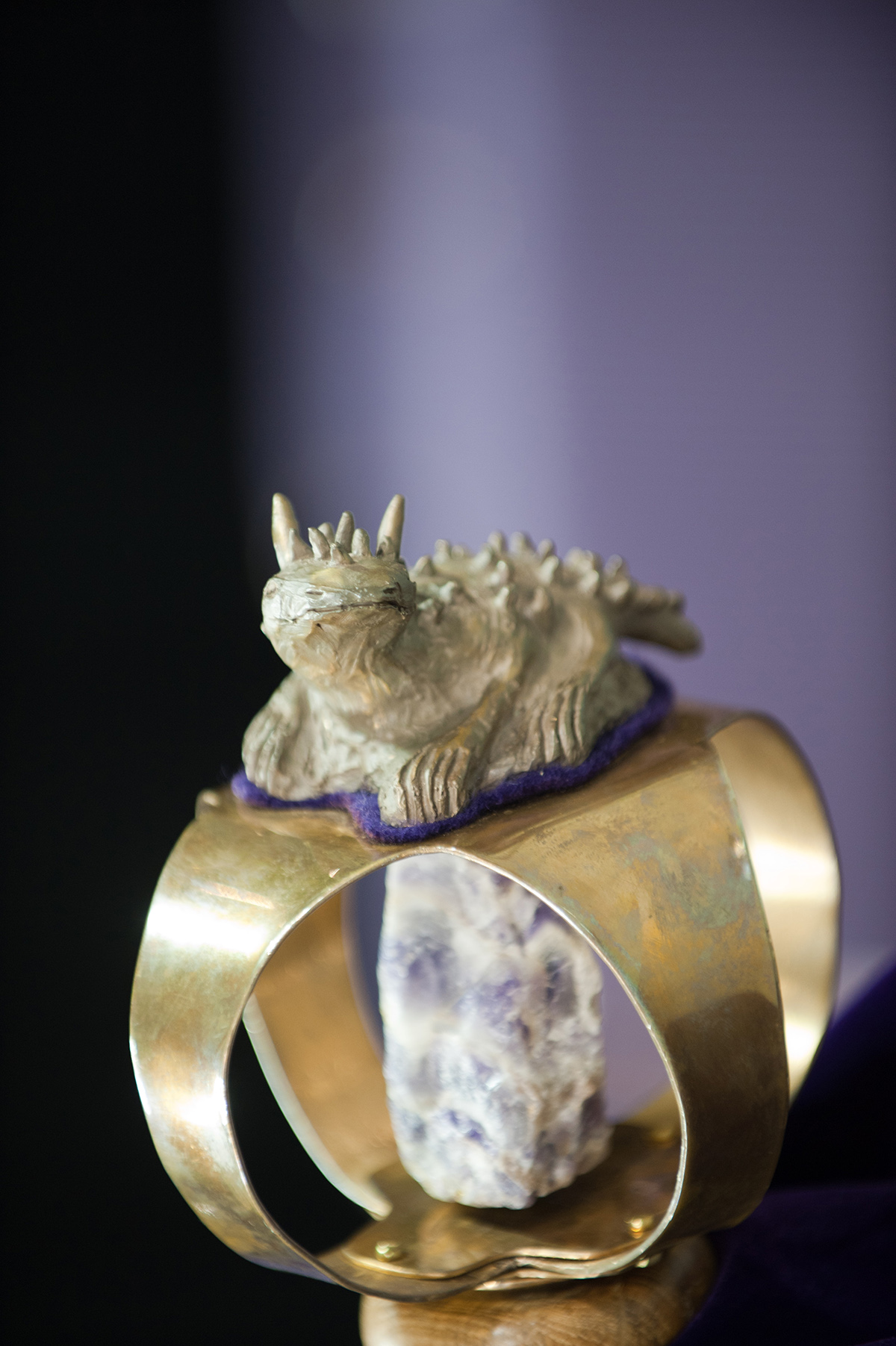Object Lesson: TCU’s Mace
The symbol of strength includes elements of brass, bronze, amethystine quartz and salvaged wood.

Photo by Glen E. Ellman
Object Lesson: TCU’s Mace
The symbol of strength includes elements of brass, bronze, amethystine quartz and salvaged wood.

Linda Hughes entering a commencement ceremony with the TCU mace. Photo by Glen E. Ellman
During the medieval period, a spiked mace was used as a weapon or as an intimidating tool for enforcing law and order. In the peaceful environs of modern academia, the mace functions as a ceremonial symbol of the strength of a university and its leaders.
Master carver Robert Kramer, then a staff carpenter at TCU’s Physical Plant, designed and created the university’s mace in 1999 for the inauguration of former Chancellor Michael Ferrari.
Kramer used red oak wood salvaged from a beam supporting the first building constructed at TCU’s predecessor, the AddRan Male and Female College in Thorp Spring, Texas.
Sculptor Seppo Aarnos forged the mace’s head with brass and topped it with a custom bronze horned frog. A purple amethystine quartz, from the collection at TCU’s Monnig Meteorite Gallery, sits within the head.
The mace is on display in the Sumner Room in the Mary Couts Burnett Library and is carried in formal university ceremonies such as commencement and convocation.
“It is a very solid thing,” said Linda Hughes, the Addie Levy Professor of Literature, who carried the mace during a graduation procession soon after its creation. “Kind of fitting for a university that has been around for as long as TCU.”
– Jacob Smith

Your comments are welcome
Comments
Related reading:
Campus News: Alma Matters, Research + Discovery
Rhiannon Mayne Collects Meteorites
TCU’s resident meteorite expert explores clues about Earth’s beginnings.
Campus News: Alma Matters
Seppo Aarnos, 1937-2016
Famed sculptor and creator of the TCU Horned Frog rubbed for luck, died in October.
Features
A man on a mission
Former chancellor Michael R. Ferrari oversaw Commission on The Future of TCU, helped author the university mission statement and got school ready for the 21st century.